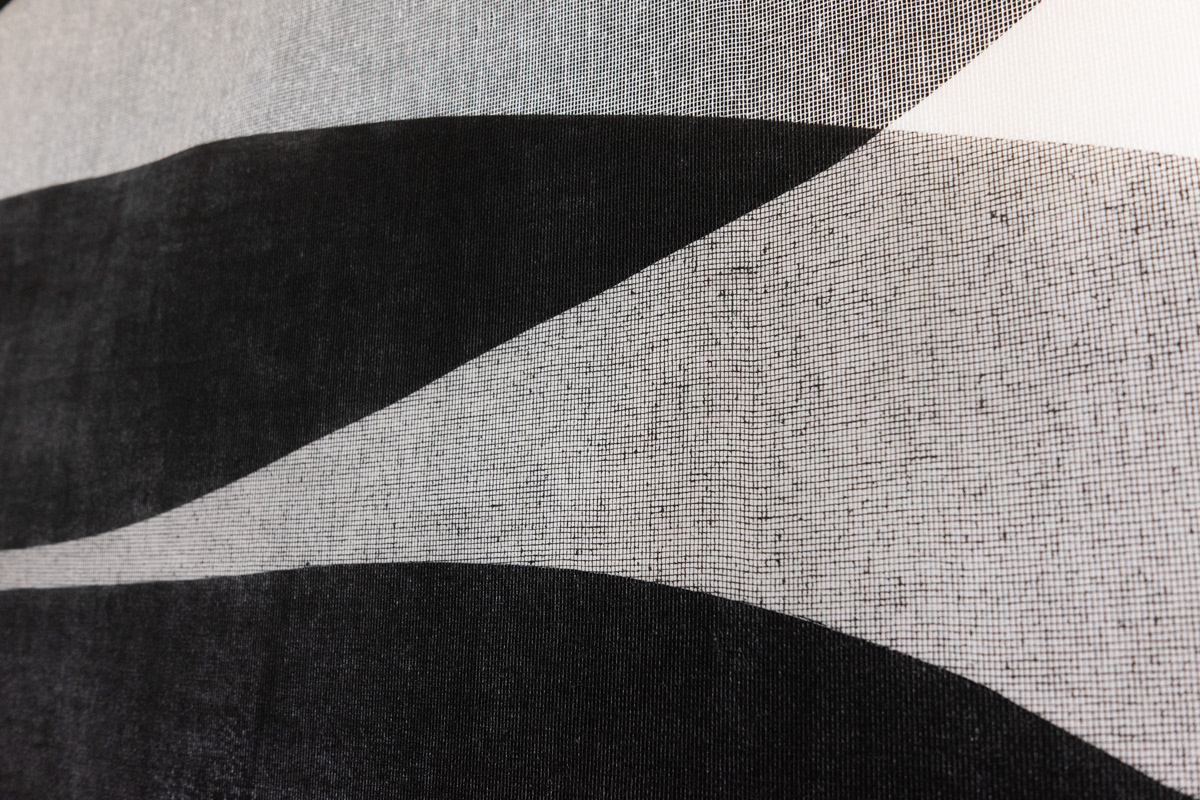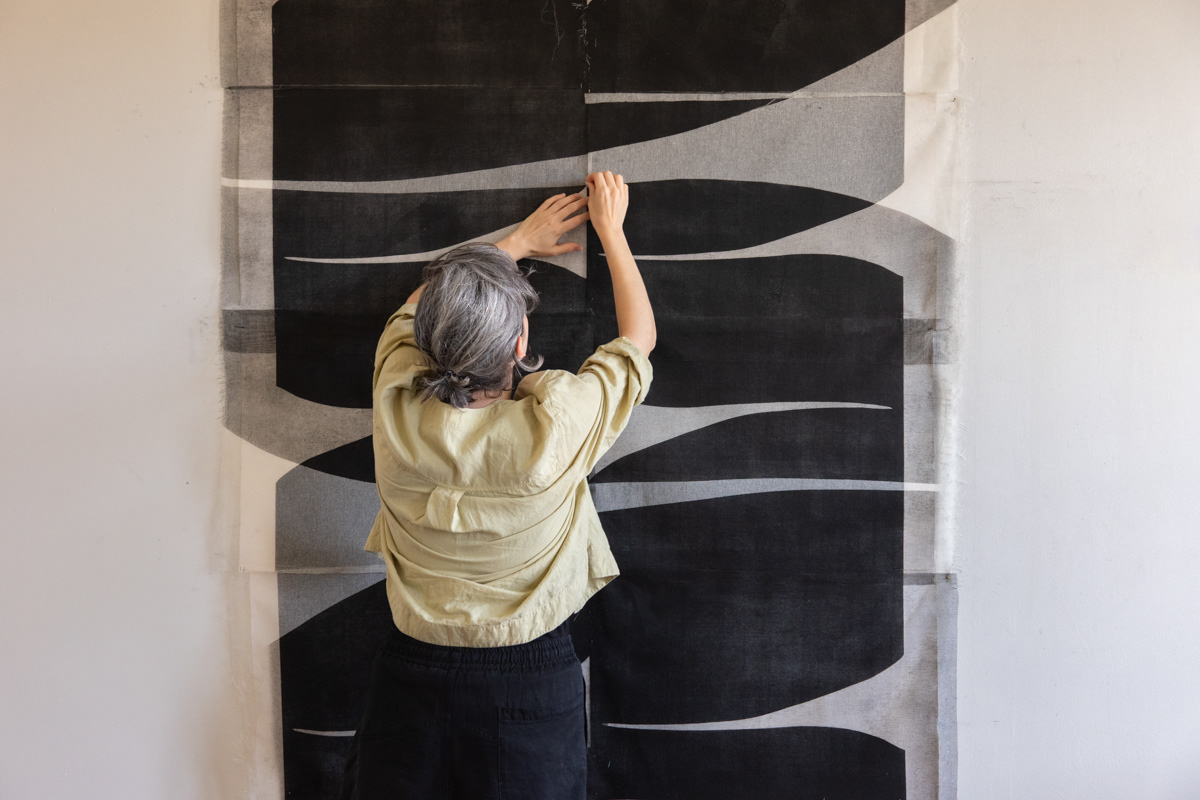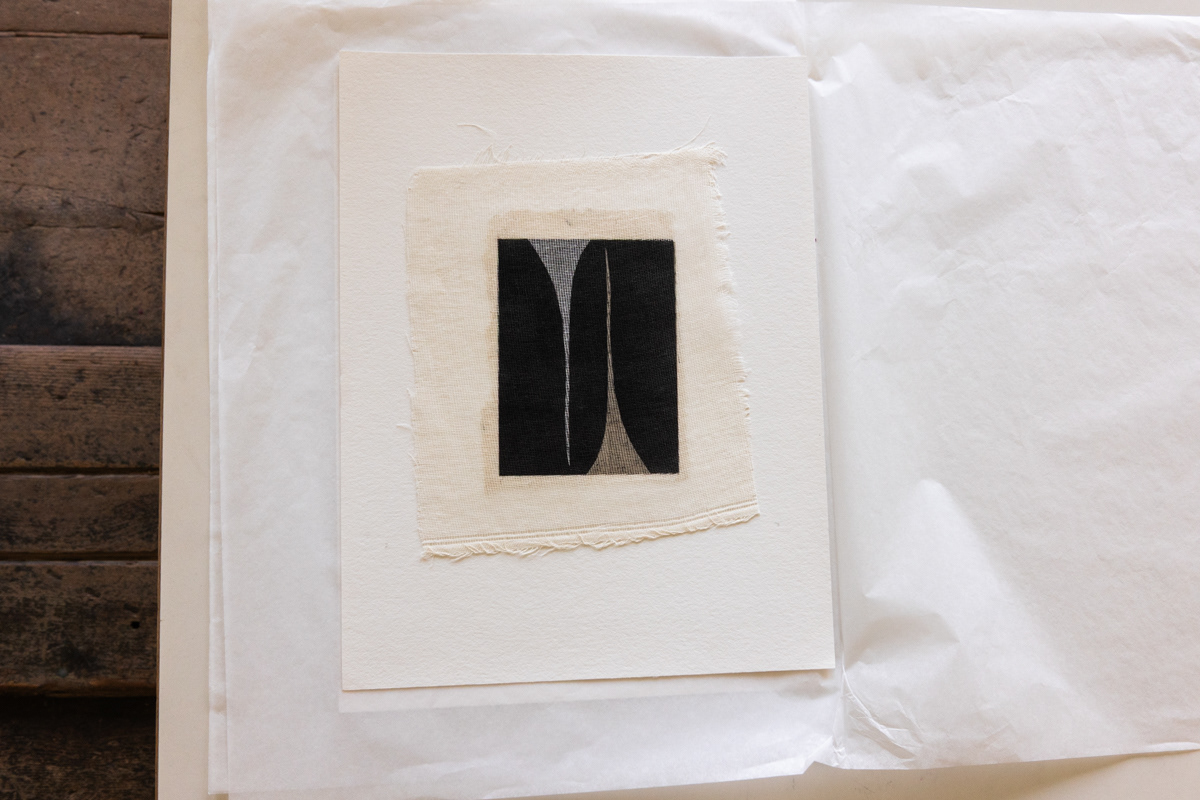Pelagia Dalduris, born 1987 in St. Gallen, lives and works in Zurich. Her artistic practice explores material and space, spanning painting, pigment experiments, printmaking, and installation. Dalduris often creates immersive environments that evoke both personal and shared memory.
IMATELIER: Pelagia, we’re here in your stunningly beautiful studio — first of all, congratulations on working in such a space!
PELAGIA: Oh, thank you. It was so nice having you in my studio. I was really happy about your request and your visit. You can feel how important this project is to you and the joy with which you approach it!
IMATELIER: Thanks! It also looks like you’ve put a lot of care into this room. When it comes to arranging your studio, what matters most to you?
IMATELIER: Thanks! It also looks like you’ve put a lot of care into this room. When it comes to arranging your studio, what matters most to you?
PELAGIA: Yes, that’s exactly how it is. My studio means so much to me, on so many different levels. To begin with, I was very lucky to get hold of such a space; it’s extremely difficult to find something in Zurich. Having a studio like this, and being able to make art at all, feels like a huge privilege. At the same time, though, it’s also a conscious choice — just like choosing to make art, it’s a decision to rent a space, and that comes with a price. Strictly speaking, it’s one I can’t really afford. Or can I?
Maybe the real question is more about what we choose to spend money on. For me, the studio is not just a practical decision, but also a way of giving space to my own needs. But that wasn’t really the question, was it? [laughs] The actual question was what matters to me when it comes to arranging my studio.
First of all, I try to keep things as minimal as possible when it comes to furniture. Although that’s not really true anymore, since it’s actually already quite full. What I mean is that only a few pieces have a fixed and permanent place—like the shelf that serves as the backdrop for my archive, or the metal racks. Everything else is mobile and constantly in motion, depending on what I’m working on at the time. I think the white space — or empty space, the free area — is very important to me. It’s important for me not to be too distracted; I always need a certain calm around me. I can see this same tendency in my artistic work as well. Balance, and the way spaces and surfaces are divided, is something that runs throughout my practice — the positive and the negative. What interests me most is the space that emerges through deliberate omission, or the surface that remains untouched.
IMATELIER: You seem to masterfully play with that balance in your works! They are very graphical, whether in monochrome or in color, and also rich in texture. How do you decide which materials to work with?
PELAGIA: Each material or technique has its own dynamic and requires a completely different kind of engagement from me as an artist. It has its own language – it needs a different way of handling and a different involvement of the body. I’m interested in how the body itself becomes a tool, or even a performative act. At the core – or within the themes – my works are connected. One of these recurring themes is balance, along with reduced forms, surfaces, transparency, body, care, reproduction... I think depending on the life situation I’m in, or whatever is occupying me at that moment, I choose the medium that fits – always in very different rhythms.
My soft pastel works, for example, are created in a very calm, often seated, and lengthy process. My fingers are the tools: layer by layer, I rub the pigment into the coarse paper until its pores are closed. I’m very close to the image – for me, there is no greater intimacy with color or with the work itself than here. The powder settles deep into my fingertips, and sometimes I have to stop because the friction makes them hurt. Everything about it is fragile, soft, and requires the utmost care. Working on the printing press, on the other hand, is much more hectic and requires a different kind of strength. I’m constantly in motion, moving through different steps and stations in my studio – I’m always on the go.
IMATELIER: Is there a material you find yourself returning to most often?
PELAGIA: Let me think... looking back over the past five years, I would say that gauze has definitely been a recurring material in my work. I’ve used it in many different ways. I started with installations, dyeing meters of gauze in large color vats and shaping it in the space while it was still wet. Then I used it as a painting support, working on it with broad, painterly gestures. I’ve also used the gauze in its raw state, stretching and shaping it with metal plates, until I eventually began treating it like paper – placing it under the press and combining it with paper to create collages. That's actually what my most recent work Same note Same, 2025 is about, as well as the large wall collage for which I'm still thinking about the title. My first impulse was the Damons in me and the first impulse is usually the best. Why not?




MATELIER: You describe your body as a tool and part of a performative act in your process. How do you take care of it in return? Are there any restorative rituals that help you recharge physically/emotionally after the busy periods of making?
PELAGIA: Hmm… good question. I don’t really have any special rituals. For sure, being mindful and listening to the body’s signals, taking breaks… But I’m always surprised at the enormous energy that comes during intense creative phases, for example right before a deadline. Something special happens then: the body switches modes. These processes have something magical – they push you to the limit, and often that’s when the best work is created. Maybe because you’re so focused, fully in the doing, the body keeps going and the head has no time to doubt.
IMATELIER: When you say ‘the best work,’ how do you define that?
Do you have any specific criteria for what makes a piece of art ‘good’ in your eyes?
PELAGIA: The ‘best work’ is maybe a wrong expression, what I probably wanna say is more like the strongest or most powerful works, the ones that pushed you out of your comfort zone, in which you become incredible strength.
IMATELIER: When you say ‘the best work,’ how do you define that?
Do you have any specific criteria for what makes a piece of art ‘good’ in your eyes?
PELAGIA: The ‘best work’ is maybe a wrong expression, what I probably wanna say is more like the strongest or most powerful works, the ones that pushed you out of your comfort zone, in which you become incredible strength.
In-Between Spaces #1, 2025. Soft pastel and acrylic on paper, 110 x 82 cm.
Photo courtesy of the artist.
IMATELIER: That’s interesting! Would you share some examples of artworks or projects by other artists that you find powerful? Maybe something that impressed you recently, or works that have inspired you over a longer time.
PELAGIA: I think I am someone who is deeply interested in the vulnerable — the vulnerability of people… stories.... The delicate, fragile aspects are, for me, a powerful form of strength that deeply moves and resonates with me. The retrospective of Rebecca Horn at the Haus der Kunst in Munich had such a power for me... I was very touched by her body-related works. Her work is very poetic, fragile, and delicate, even though it also has something very hard about it — certainly also because of the mechanics she uses… Then I was very touched by the exhibition The Violence of Handwriting Across a Page by Louise Bourgeois, curated by Jenny Holzer. I was very moved by Louise Bourgeois’ fearlessness, even though she describes herself as a very anxious person. These rooms were filled with immense power that you could really feel.
IMATELIER: Sounds exciting. Pelagia, thank you for sharing!
Before we finish, may I ask if you have any upcoming exhibitions Imatelier's readers should look out for?
Before we finish, may I ask if you have any upcoming exhibitions Imatelier's readers should look out for?
PELAGIA: Yes! I am very happy to be able to present my work “Aus der Mitte”, a large-scale composition of fabrics and gauze from 2024, at the Regionale 2025 in November [23. November 2025 – 1. Februar 2026] at the Kunst(Zeug)Haus Rapperswil.
30/10/2025
